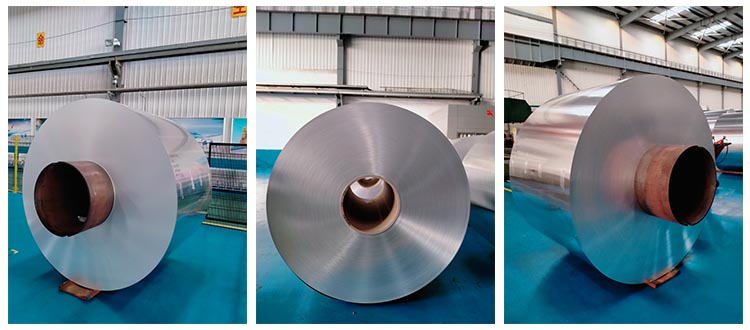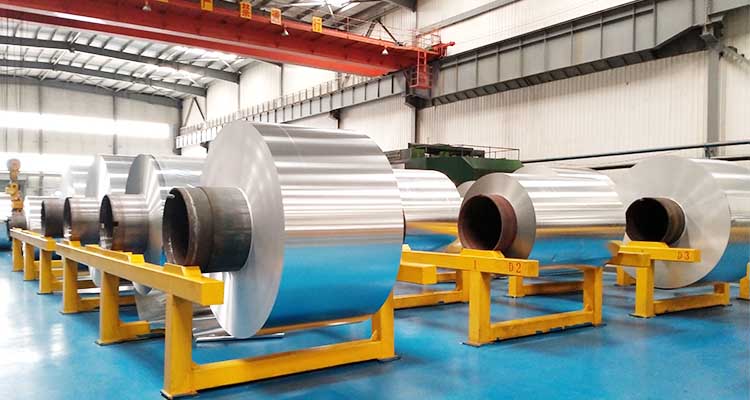What is the 3003 aluminum foil ?
3003 Aluminum, also known as Alloy 3003, is a grade of aluminum commonly used in manufacturing due to its excellent formability and corrosion resistance. With the nominal chemical composition of magnesium and manganese as its major alloying components, 3003 aluminum foil and coil stock is easily cold worked, well formed for bending and various applications. It is widely used in architectural applications such as roofing, siding and signage due to its ability to retain its shape for extended periods of outdoor weather. The weldability of 3003 aluminum also makes it suitable for transportation production, being a popular choice for auto body panels, truck trailers and recreational vehicles. Its lightweight yet strong and durable nature offers advantages for fuel efficiency when used in automotive manufacturing.
Another major use for 3003 Aluminum Foil is for packaging. The material is widely used in food wrapping foils and cans due to its corrosion resistant properties that protect the integrity of the product during storage and distribution. It is also used for cosmetic tubes, household containers and appliances due to its ability to form into complex shapes through processes such as deep drawing. The recyclability of 3003 aluminum is also advantageous, as most packaging and building materials made from it can be sorted and melted down to make new products at the end of their life. Its ability to be reused again and again without loss of material properties fits within the circular economy paradigm increasingly demanded by regulators and consumers alike.
Through continuous improvements in forming techniques, 3003 Aluminum Foil also enables new technologies. It is increasingly used as a structural material in electric vehicles to reduce weight and increase driving range. 3003 shows promising results for additive manufacturing processes developing lightweight custom components. Its corrosion resistance, conductivity and filtration capabilities will ensure that 3003 aluminum remains indispensable for transportation, manufacturing, packaging and more in the near future as industries continue to advance sustainability priorities.
3003 Aluminum foil is a foil produced from 3003 Aluminum Foil with a composition of 1.2% manganese and 0.12% copper, giving it excellent corrosion resistance and performance qualities. Corrosion resistance is important in food packaging applications that will withstand high temperature ovens without chemical generation. Breaking down since fall, it is also used to line baking foils.
The elasticity and recyclability of 3003 aluminum foil provides sustainability benefits, such that food packaging containers or packaging materials can be reused after use to make new aluminum foil or other aluminum products. 3003 aluminum foil can be reinvented and reused time and time again. Less material is required for the same application compared to alternatives such as plastic Increasing the percentage of recycled material in the production of new 3003 foils reduces the carbon footprint by optimizing these circular properties.

►Food packaging - 3003 Aluminum Foil For Making Food Container
3003 H24 Aluminum Foil is widely used for food packaging due to its corrosion resistance. The flexibility and formability of 3003 foil makes it ideal for shapes commonly required in food storage and transport packaging. When drawn deeper for takeout food, the 3003 Aluminum Foil forms into sturdier cups and trays. Roll stock also oversells cheese and meat packages. Food manufacturers frequently line pans with 3003 foil before baking, because it withstands high oven temperatures without degradation.The thin 3003 can be stretched into stamps or wraps on foil that are perfect for sealing snacks, baked goods, sandwiches and other foods. Using deep drawing techniques, complex containers such as cups and trays can be formed from 3003 foil for takeout food. Its ability to withstand high oven temperatures also makes 3003 H24 Aluminum Foil suitable for cake pans, casserole dishes and other bakeware linings. Whether creating lightweight wraps or durable containers, 3003 foil protects contents and maintains freshness.

►Aluminum Foil 3003 For Electronic Foil
3003 aluminum foil plays an important functional role in electronics. A major use as an electromagnetic shielding material in electronic device housings and components. Its conductivity enables the 3003 foil to reflect electromagnetic interference between circuit boards, preserving signal integrity. The 3003 is also a popular choice for capacitor manufacturing, as its consistent thickness helps in perfect capacitance values. Recent advances optimize the 3003 foil surface treatment to further enhance the conductivity required for fast charging battery technology.
3003 aluminum foil excels in constructing soundproofing applications. Combined with free cell foam, its inclusion dampens vibration transmission to improve sound absorption. The high sound reflection properties of 3003 foil provide effective sound barriers for wall and ceiling surfaces.
3003 Aluminum foil has many applications in the electronics industry due to its beneficial electrical and physical properties. As a conductive material, it serves an important function as an electromagnetic shielding element. 3003 foil is commonly used to construct electronic device housings and enclosures, which helps to stop interference between internal circuits. It can also be implemented as a thin foil shielding layer between circuit boards. Another major electronic use of 3003 foil is in the manufacture of aluminum electrolytic capacitors. Its consistent thickness supports consistent and precise capacitance values that are essential for circuit operation. Continuous research further optimizes the characteristics of the 3003 Aluminum Foil For food container to improve its performance for new technologies such as high energy batteries, where its conductivity must handle the requirements of fast charging. makes the 3003 foil suitable for miniature electronics requiring long operating life. Its sustainability as a completely recyclable material, reusable indefinitely, additionally positions 3003 Aluminum Foil For food container as a strategic component meeting the evolving needs of the 21st century electronics industry.

►3003 Aluminum Foil For Honeycomb Materials
3003 Aluminum Foil Raw Material is well suited for applications involving honeycomb composite materials due to its lightweight yet durable properties. The structure of the honeycomb provides strength relative to their mass and the 3003 foil can be formed into the pattern of repeated hexagonal or diamond cells that make up the honeycomb. It is commonly used as a facing material in honeycomb cores, bonded or expanded with other materials such as Nomex, aluminum or plastic foils to create a cellular layout. The formability and strength of the 3003 foil allows for honeycomb designs that can resist compression and torque loads.
The Honeycomb composite material, which uses 3003 aluminum foil, combines its versatility with strong yet lightweight qualities. The repeating diamond or hexagonal cell structure 3003 is produced by bonding or expanding the foil with an alternate core material. Applications include aircraft interior panels, building wall and roof construction, wind turbine blades and more. Ongoing research optimizes 3003 foil chemistry and manufacturing techniques to continually increase the strength-to-weight ratio of honeycomb products for sustainable construction.
Some of the main industries that use 3003 aluminum foil in honeycomb products are aircraft, construction and renewable energy. 3003 foil honeycombs are implemented as interior paneling and other uncomplicated structures to reduce aircraft weight in space. Building commercial applications include roofing, siding and insulation that benefit from the honeycomb’s thermal and moisture barriers. Wind turbine blades also take advantage of the 3003 foil composite to meet requirements for rigidity but require less mass.

►Aluminum Foil 3003 For Building Sound Insulation Materials
3003 Aluminum foil can be formulated as both stand-alone and composite materials in construction to provide important sound insulation properties. When combined with nonwoven fibers, open-cell foam or other low-density polymers, the inclusion of 3003 foil enhances sound absorption through interference with the transmission of vibration to the wall cavity. Its nonflammability also enables use in fire protection applications. As a standalone layer, the sound reflectivity of the 3003 foil gives significant sound blocking benefits. Honeycomb Aluminum Foil 3003 For Radiator barriers effectively limit sound transmission between room and floor. Its lightweight yet durable nature allows straightforward implementation during construction with minimal impact on the finished design or structural loads. The corrosion resistance of the Honeycomb Aluminum Foil 3003 For Radiator additionally ensures that the sound insulation benefits will last the life of the building.







